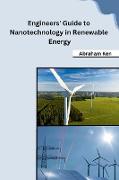- Start
- Engineers' Guide to Nanotechnology in Renewable Energy
Engineers' Guide to Nanotechnology in Renewable Energy
Angebote / Angebote:
Definition and Overview of NanotechnologyNanotechnology is a rapidly evolving field that has garnered immense interest and excitement among engineers in recent years. This subchapter aims to provide a comprehensive definition and overview of nanotechnology, highlighting its significance in the context of renewable energy.Nanotechnology involves the manipulation and control of matter at the nanoscale, typically ranging from 1 to 100 nanometers. At this scale, materials and devices exhibit unique properties and behavior that can be harnessed for various applications. By manipulating matter at the atomic and molecular level, engineers can create novel materials with enhanced properties and develop innovative solutions to address key challenges in renewable energy.The field of nanotechnology encompasses various disciplines, including physics, chemistry, biology, and engineering. Engineers play a crucial role in translating fundamental scientific discoveries into practical applications that can revolutionize the renewable energy sector. They strive to design and develop nanoscale materials, devices, and systems that optimize energy generation, storage, and utilization.One of the key advantages of nanotechnology in renewable energy lies in its ability to improve the efficiency of energy conversion processes. By utilizing nanomaterials, engineers can enhance the absorption and conversion of sunlight into electricity, leading to more efficient solar cells. Similarly, nanotechnology enables the development of advanced catalysts for fuel cells, which enhance the conversion of chemical energy into electrical energy.Furthermore, nanotechnology offers immense potential in energy storage systems. Engineers can design nanomaterials for high-performance batteries and supercapacitors, enabling more efficient energy storage and retrieval. This has significant implications for renewable energy integration, as it facilitates the smooth integration of intermittent energy sources like solar and wind into the electrical grid.
Folgt in ca. 10 Arbeitstagen
